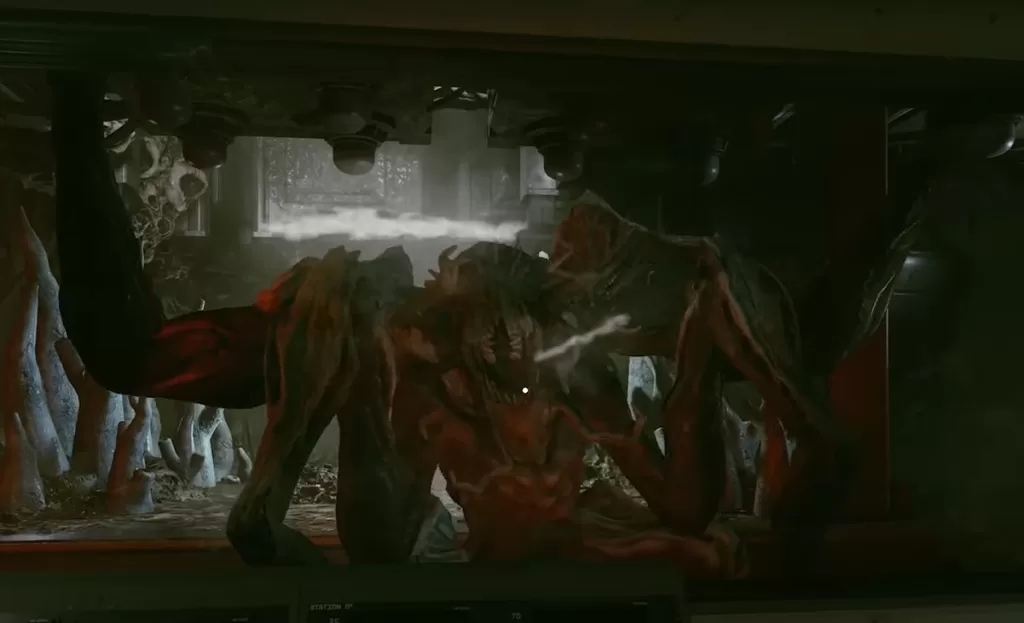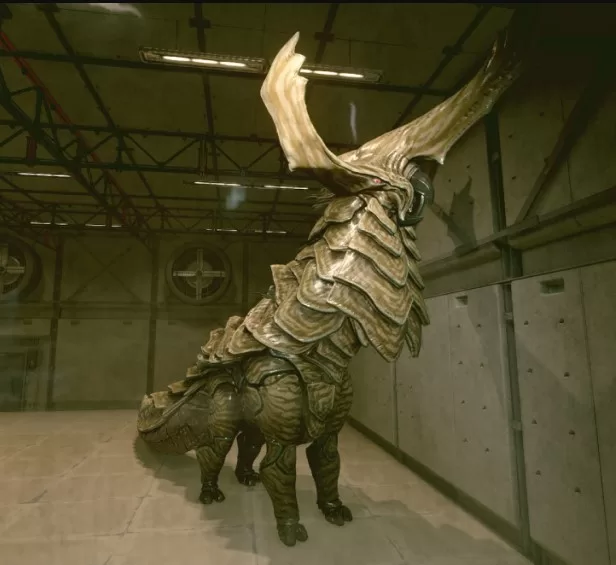Starfield Terramorph Quest: Rethinking the Aceles vs. Microbes Debate
The terramorphs are a dangerous invasive species threatening human colonies in the Starfield universe. Introduced in the Starfield Terramorph Quest mission, terramorphs are revealed to originate from a plant called Lazarus that triggers a metamorphosis in slug-like creatures called heat leeches. While initially unknown, research traces the terramorphs back to the planet Londinium where the Lazarus plant grows in the wild. From there the terramorphs have spread to human colonies across many star systems, putting the lives of colonists at risk.
Terramorphs pose such a huge threat for several reasons:

- Rapid Breeding – Terramorphs reproduce quickly by laying large clutches of eggs that hatch into aggressive offspring ready to feed within days. Their numbers can overwhelm ecosystems very rapidly.
- Burrowing Behavior – Terramorphs dig extensive tunnel networks wherever they establish nests. This can undermine infrastructure and make eliminating them challenging.
- Difficult to Eradicate – Terramorphs have hard mineralized skin that make them resistant to damage. Their decentralized tunnel networks ensure some always survive eradication attempts.
- Human Predation – Terramorphs seem to prefer feeding on humans whenever possible. They are drawn to human colonies and population centers to attack settlers.
- Ecosystem Disruption – Being an invasive species, terramorphs severely damage native ecosystems by disrupting food chains. They have already caused species extinctions on some colonies.
With terramorph numbers exploding exponentially and reports of attacks on colonies growing, all factions in the Settled Systems agree a massive effort is needed to eliminate the terramorph threat. But there are two very different theories on how best to eradicate them.
The Microbe Solution
The first option proposed is to engineer a targeted microbe that will kill terramorphs selectively. The science faction Constellation takes the lead in developing this plan. Their labs rapidly develop a theoretical “terramorph microbe” designed to infect terramorphs and disrupt their cellular biology, causing quick death.
Constellation scientists assure the microbe can be calibrated to only affect terramorph DNA. It spreads quickly between hosts but cannot survive long without a terramorph host. They plan to introduce it simultaneously across all human colonies, seeded in areas with large terramorph populations. The goal is to entirely eliminate terramorphs in all systems within a few years.
Pros of the microbe solution:
- Rapid planetwide distribution is possible via ships and probes
- Microbial reproduction enables it to spread quickly between terramorphs before a defense can evolve
- Advanced modeling suggests low risk of mutation or unintended consequences
- Offers hope of eliminating all terramorphs in one decisive blow
Cons of the microbe solution:
- Mutations are still a possibility at microbe reproduces across billions of hosts
- Terramorphs may survive in remote locations and develop immunity
- Meddling with an entire species’ extinction ecologically is dangerous
- If it backfires, there is no way to stop or recall an engineered microbe plague
The Aceles Solution

The second option is to reintroduce the aceles, an earlier species that had gone nearly extinct. Aceles are large reptilian creatures that evolved to prey on terramorphs and keep their populations in balance naturally. It is speculated past human hunting caused the aceles decline, enabling the terramorph population explosion.
The proposal is to breed aceles rapidly to reestablish significant populations on human colonies. This would give terramorphs a natural predator to keep their numbers in check long-term. Within a few generations aceles could stem the terramorph tide and restore balance.
Pros of the aceles solution:
- Allows ecosystems to stabilize naturally without further disruptions
- Aceles coexisted peacefully with humans for centuries as livestock
- Low risk of unintended consequences from a native species
- Permanent solution as aceles and terramorphs reach natural equilibrium
Cons of the aceles solution:
- Much slower to reduce terramorph attacks in the short term
- Difficult to coordinate aceles breeding across many star systems
- Some risk of aceles also threatening humans without enough food supply
- Harder to directly control aceles spread compared to microbes
Decision Time
Faced with these options and limited time to act, the player must ultimately decide whether to trust in Constellation’s science and deploy the microbes, or take a more ecological approach by bringing back the aceles. Both solutions aim to eliminate the terramorph threat, but on very different timelines and with different philosophical approaches.
Most companions and factions seem to favor the microbes, seeing them as a quick end to the crisis through technology. However, the aceles offer a more holistic ecological solution. Perhaps the wisest path lies somewhere in the middle – utilizing both options in combination over time. But the player must ultimately choose, a decision that will have ripple effects across the Settled Systems for years to come.
Making the Call
When the Redditor reached this decision point in the quest, he felt torn. The microbes offered a neat and simple silver bullet that appealed to me as a sci-fi fan. Unleash a high tech plague designed by the eggheads, and voila, no more terramorph problem. The aceles seemed primitive and messy by comparison.
Yet the more I considered both options, the more the aceles made sense to me. I started to see the risks inherent in trying to mass extinct a species through microbial engineering. The universe was giving me deja vu of plots from half the sci fi horror movies I’d seen. No matter how advanced Constellation’s tech seemed, eliminating any chance of the microbes mutating once released across an entire galaxy sounded far fetched. Introducing a genetically engineered bug designed to wipe out billions of lives on multiple planets simultaneously just sounded rife for trouble down the road.
So in the end, I held my nose and went with the aceles solution. It felt weirdly regressive – using a creature from the past to solve a modern problem. But I realized that ecological thinking has a sophistication technology doesn’t always match. The terramorphs and aceles had lived in balance for eons before humans disrupted it. Restoring that natural equilibrium sounded better than trying to force a man-made alternative.
I’m sure Constellation could produce some fancy charts showing scenarios where the microbes succeed as planned. Yet life has a way of surprising even the smartest experts. By taking the slower path, I hoped to restore some of humanity’s lost humility and appreciate the wisdom inherent in nature’s own solutions. We got into this mess by upsetting ecology. It made sense to correct the balance sheet by restoring an animal we hunted to extinction.
In the end, it felt fitting to go with the less fancy but more stable choice. I don’t know what long term consequences my decision may bring over the course of the game’s story. But I feel restored some small fraction of the harmony humans disrupted, setting life in the Settled Systems back on course. Plus I get some sweet space dinosaurs out of the deal.
Living With the Consequences
After the terramorph quest line, the game jumps forward a year. At first it is unclear what the outcome has been of my decision to release the aceles instead of microbes. None of my companions bring it up for a while. I start to wonder if it had any impact at all or if the game even tracked my unique choice.
Eventually though, I come across some clues while visiting colonies that the aceles solution is taking effect. I run into a freelancer in the Crimson Fleet who thanks me profusely – he says aceles riders have been vital in keeping their colonies safe. Rumors spread in bars that terramorph attacks are becoming rarer since the aceles resurgence. Exploring abandoned mines I find terramorph carcasses with aceles bite marks.
The most surprising moment comes when I visit Rheticus and see a farmer riding an aceles mount along a country road. We have a conversation and he explains the predators I restored have already stabilized the terramorph outbreak here. He sees them not as ferocious beasts, but useful partners, much as farmers on Earth once lived in harmony with natural predators. I walk away feeling I may have made the right call after all.
The game neatly avoided any definitive right or wrong outcome, leaving it ambiguous whether the microbes would have worked better. But the environmental clues communicating that ecological balance has been organically restored make me feel real agency as a player. I impacted this little digital universe in a small but tangible way. While major story beats play out the same regardless, my decision to “rewild” Starfield’s frontier seems to have resonated. For an open world RPG, that ability to leave my own mark through gameplay feels potent.
Lessons Learned
Looking back on the terramorph quest now, my key takeaways are:
- Often solutions that seem quick and technologically sophisticated come with proportional risks
- Humanity should remember our past mistakes so as not to repeat them
- Ecology has an intelligence of its own we can work with instead of seeking to overpower
- With patience, natural balances often restore if allowed to instead of forcing change
- Having power to alter worlds, even virtual ones, should make us cautious and humble
It is fitting that in a futuristic game set in space, the most prudent solution involved rediscovering lost wisdom from the past. Beyond just enjoying the aceles roaming around my game world, I appreciate the quest making me rethink my biases. When faced with an exciting, high-tech option versus a slower, natural solution, the apparently primitive choice may actually have greater sophistication.
This quest forced me to confront my own temptation toward the quick fix over ecological thinking. I believe that tension between humanity’s aspirations toward advancement and the need for wisdom and sustainability will define our real world future. I’m grateful this side quest brought those real philosophical challenges to the fore in a thoughtful way, instead of simply glorifying technology’s forward march. Few games make me reflect on real world debates like this, and it’s part of what makes Starfield’s immersive world feel meaningful.
The aceles may not be as exciting as a designed supermicrobe on paper. Yet just like in the real world, egos have to be checked and balance carefully restored in virtual spaces too. I’m proud this one tiny decision was in favor of life’s intricate equilibrium, rather than risking everything to rush progress. Our future, both real and virtual, depends on getting that balance right.
So in summation, I have no regrets picking the aceles. Long live the space cows! May they continue to roam the stars keeping Starfield’s ecosystems happy and healthy. This space cowboy sleeps well at night knowing I made the right call to bring them back.